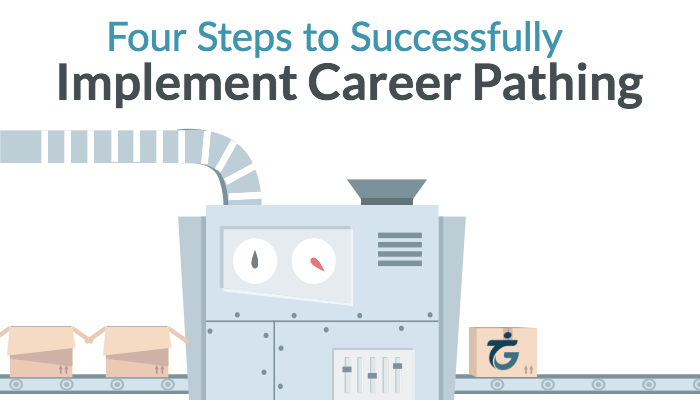Employees Develop Career Paths and Stay Longer

How to Help Employees Develop Career Paths
Employees want to understand what is required of them to change roles or advance in their careers, but the necessary processes may not be in place. By understanding how to help employees develop career paths, you will soon be able to provide employees with a clear road map to career development and growth. If employees are left to guess and wonder what steps they need to take, you will likely find them moving to another company that can meet their needs.
As the job market and economy improve, the number of employees willing to leave their positions and companies for greener pastures is climbing. January 2017 saw an increase in voluntary separations compared to the months before, and 51% of employed personnel in the U.S. are actively seeking or watching for new openings. The data taken together—and combined with the general low tenure rate for Millennial workers—clearly show one thing: retention may be one of 2017’s biggest human resources problems. If companies don’t partner with their employees to achieve individual career goals, those employees will leave.
An effective human resources department will be that partner—assisting employees in creating and navigating their desired career paths. To be that partner, however, HR must be able to do the following:
- Provide employees with access to job role data
- Help employees objectively assess their skills, strengths, and weaknesses
- Offer a method for comparing employees’ current tactics to future roles
- Provide access to mentoring, coaching, and learning resources that work for a variety of learning styles
- Offer opportunities to test out newly acquired skills in a team environment
- Support lateral and vertical moves in each unique career path when employees are ready
An effective career pathing process combines these steps into a streamlined, easily accessible program. While a human resources department can achieve the desired results by providing employees with the above information and opportunities on a piecemeal basis, it takes a significant investment of time and resources. It also depends on the availability of the human resources staff at any given time. Accessible and interactive career pathing tools are a more efficient method.
An all-in-one career pathing software program offers employees the opportunity to build and navigate their career paths independently—but with expert guidance. The best programs combine talent profiles, gap analyses, organizational insights, coaching and development, and job searches together, in a dynamic, user-friendly interface. TalentGuard’s also offer customized career paths, including specific information on skills needed for each movement and knowledge on how to acquire those skills, to help employees get from where they are to where they want to be.
To learn more about career pathing best practices and benefits, visit TalentGuard’s Learning Center.
Interested in starting a career pathing software initiative? View TalentGuard’s Career Pathing Software page, or request a software demo.
Are You Ready to Start a Career Pathing Program?
You know the basics: Career pathing boosts employee engagement, improves retention, and significantly increases customer satisfaction and overall profitability. You’re sold. You want to start implementing a career pathing program at your company today. The only problem is you’re not sure where to start.
Career Pathing in 2025: What It Is, Why It Matters, and a Guide to Success
Career pathing is how an employee charts a course for career development inside a particular organization. It involves identifying vertical and lateral opportunities for progression while understanding the skills, experiences, and competencies necessary for success in each role. A well-structured career pathing framework improves employee engagement and strengthens workforce retention. What Exactly Is Career Pathing? Essentially […]
The 2025 Guide to Career Pathing Implementation & Steps
There are several reasons why companies have not implemented career pathing: Years of traditional employee processes; resistance to changing those processes; fear of employees expecting advancement once they have a career path; belief that these solutions are costly and time-consuming; and expecting implementation will be complex and resource-intensive. In reality, understanding the steps involved in implementing a successful career pathing plan helps ensure a smooth transition for the company, rapid implementation time and immediate as well as long-term ROI.


